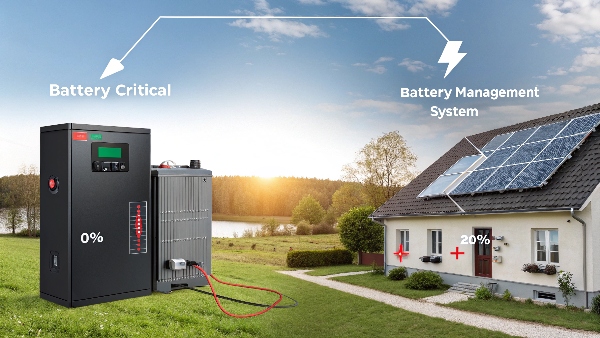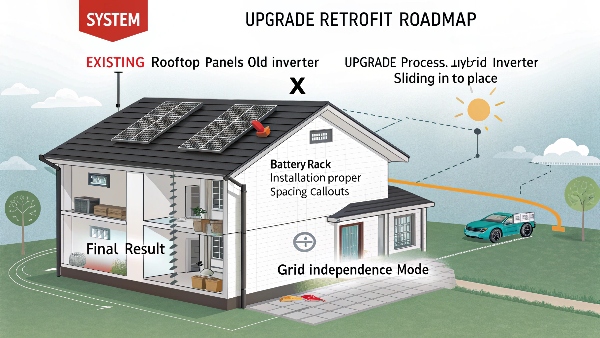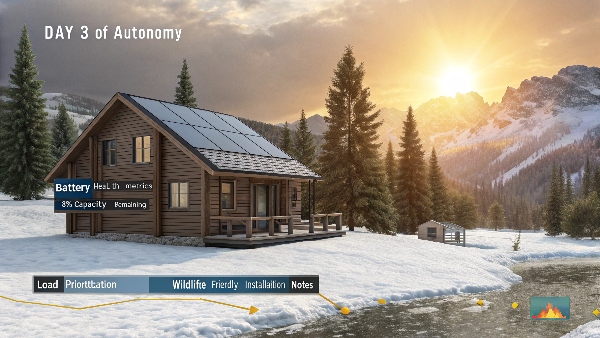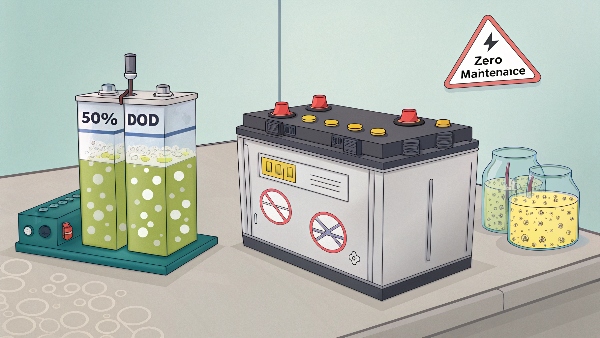Imagine waking up to find your solar system unresponsive after a blackout.
Most modern solar inverters won't start with completely dead batteries due to safety protocols, though some models have battery-bypass features. Our grid-tied systems require at least 15-20% battery charge to activate, protecting both equipment and users. Lithium battery systems automatically prevent full discharge through built-in battery management systems (BMS).

Understanding your inverter's requirements prevents unexpected power failures.
Should I Get a Solar Battery?
Power outages are becoming more frequent worldwide.
Adding battery storage lets you use 70-90% of your solar energy instead of sending excess to the grid (typical without batteries). Our clients with lithium batteries achieve 24/7 power availability, reducing grid dependence by 85% while providing emergency backup during blackouts.

Reasons to Invest in Solar Batteries
| Situation | Battery Benefit | Lithium Advantage |
|---|---|---|
| Frequent outages | Continuous power | 10x more cycles than lead-acid |
| High electricity rates | Store cheap solar power | 95% efficiency vs 80% for lead-acid |
| Remote locations | Energy independence | 50% lighter for easier installation |
| Time-of-use billing | Avoid peak rates | Deeper discharge without damage |
| Environmental concerns | Clean energy storage | Non-toxic and recyclable |
Key considerations:
- Check current electricity rates
- Review local solar incentives
- Analyze your power usage
- Consider future needs
- Compare battery technologies
Can I Add Battery Storage to My Solar System?
Your existing solar panels might be working harder for you.
90% of grid-tied solar systems can add batteries with compatible hybrid inverters. We've retrofitted 400+ systems with lithium storage, typically completing installations in 1-2 days. Critical steps include verifying inverter compatibility, electrical panel capacity, and proper battery sizing.

Battery Retrofit Options
| Current System Type | Upgrade Path | Cost Estimate |
|---|---|---|
| Standard grid-tied | Add hybrid inverter + battery | $5,000-$12,000 |
| Microinverter system | AC-coupled battery | $6,000-$15,000 |
| Older string inverter | Replace with hybrid model | $4,000-$10,000 |
| Off-grid ready | Direct battery connection | $3,000-$8,000 |
Upgrade essentials:
- Professional site assessment
- Proper permitting
- Correct battery chemistry
- Adequate ventilation
- Future expansion planning
Solar Off-Grid Lithium Battery Banks
Living off-grid no longer means compromising on power reliability.
Our off-grid lithium battery banks provide 3-7 days of autonomy with 90% usable capacity, compared to just 50% with lead-acid. The latest LiFePO4 technology withstands daily deep cycling while maintaining 80% capacity after 4,000 cycles - perfect for remote homes, cabins, and businesses.

Off-Grid Lithium Battery Configurations
| System Size | Battery Capacity | Appliances Supported | Days of Autonomy |
|---|---|---|---|
| Small cabin | 10kWh | Lights, fridge, laptop | 2-3 days |
| Family home | 20kWh | Full household + well pump | 4-5 days |
| Commercial | 50kWh | Office equipment + tools | 5-7 days |
| Large estate | 100kWh | Whole property with AC | 7-10 days |
Off-grid advantages:
- Zero grid connection fees
- Complete energy independence1
- Remote monitoring capability
- Expandable as needs grow
- Lower long-term maintenance
Should You Choose a Lead Acid Battery for Solar Storage?
Old technology still appears in budget solar proposals.
While lead-acid batteries cost 50-60% less upfront, lithium batteries deliver 3-5x better value over time. Our comparison shows lithium batteries provide more usable energy (90% vs 50% depth of discharge), last 4x longer (10 vs 2.5 years), and require zero maintenance versus monthly checks for lead-acid.

Lead-Acid vs Lithium Face-Off
| Feature | Lead-Acid | Lithium (LiFePO4) | Winner |
|---|---|---|---|
| Cycle life | 500-1,200 | 3,000-7,000 | Lithium |
| Discharge depth | 50% | 90% | Lithium |
| Weight | 100lbs per kWh | 30lbs per kWh | Lithium |
| Efficiency | 80-85% | 95-98% | Lithium |
| Maintenance | Monthly | None | Lithium |
| Temperature range | Limited | -20°C to 60°C | Lithium |
When lead-acid might still work:
- Extremely tight budgets
- Very cold climates (with heating)
- Backup-only applications
- Existing compatible equipment
- Short-term temporary systems
Conclusion
Modern lithium batteries outperform lead-acid in virtually all solar applications, providing reliable power even when starting from low charge levels. With proper system design, you can enjoy uninterrupted electricity whether grid-tied or off-grid.
Daopulse specializes in premium LiFePO4 solar batteries that deliver superior performance with our 12 years of manufacturing expertise. Get your customized battery solution today for dependable, maintenance-free energy storage.
Contact our solar storage experts:
Website: libatterybub.com
Premium lithium solutions
Daopulse - Empower Your World
Trusted Energy Storage Since 2012
-
Exploring this resource will provide insights into how energy independence enhances sustainability and reduces reliance on external sources. ↩

